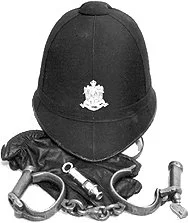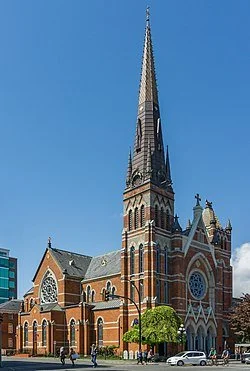Many are the pitfalls awaiting the unwary history student.
Even the experienced researcher can be lured off course by these sirens of our colourful past. To a writer of ‘popular’ history, these detours can be profitable as well as pleasant; oftimes, research of one story can uncover another. And another and another.
Which is why I liken studying history to digging a hole—the more you dig, the bigger it gets.
Sometimes these yellowing newspaper pages can lead to a dead-end, being too brief or sketchy to provide more than the skeleton of an article.
So, today, some of these intriguing—sometimes infuriating—diversions of Victoria’s early day from the pages of the old British and Daily Colonist.
* * * * *
PHOTO: This logo of the website Fallen Heroes – VicPD.ca recalls some of the fascinating criminal cases in Victoria’s history, as recorded in the pages of the Colonist. The British Bobby-style helmet was VPD issue until about 1950.




















